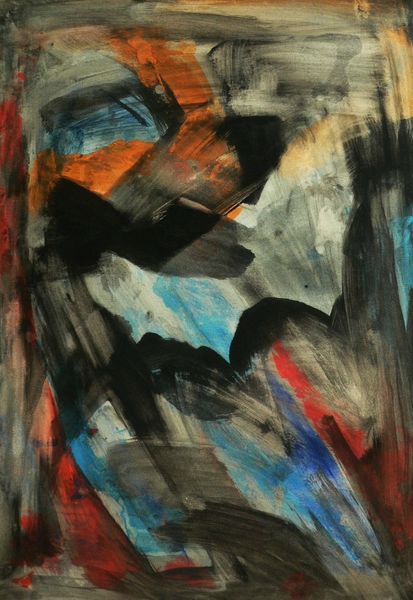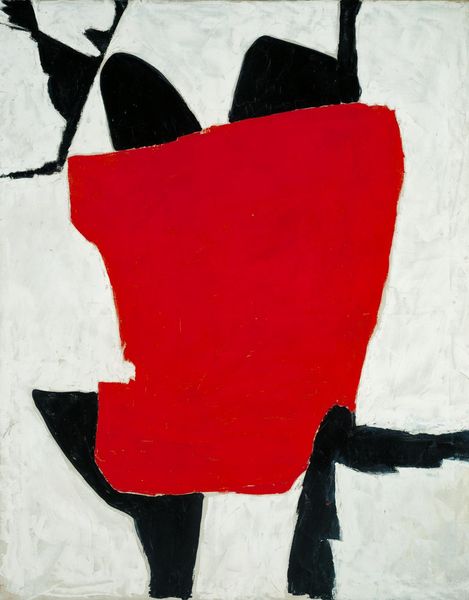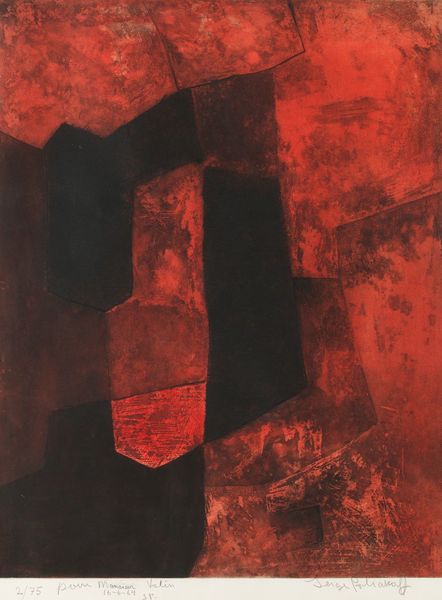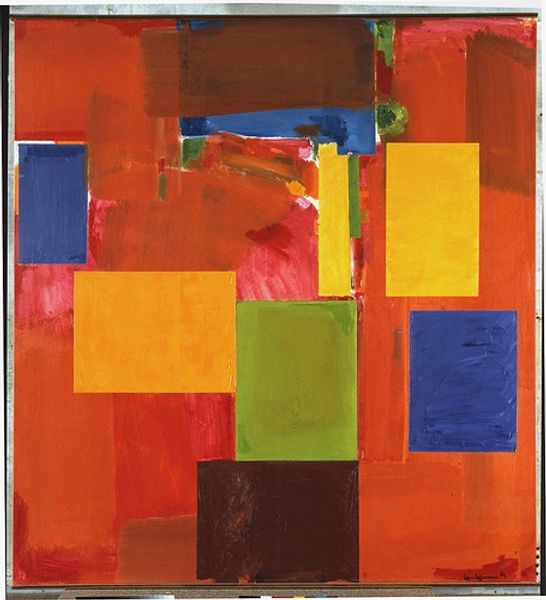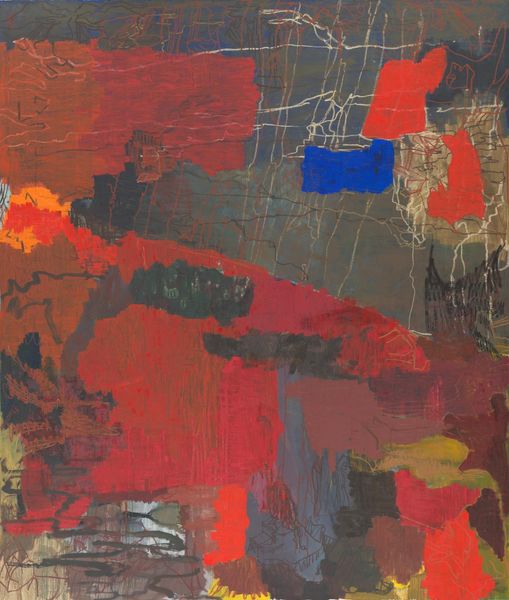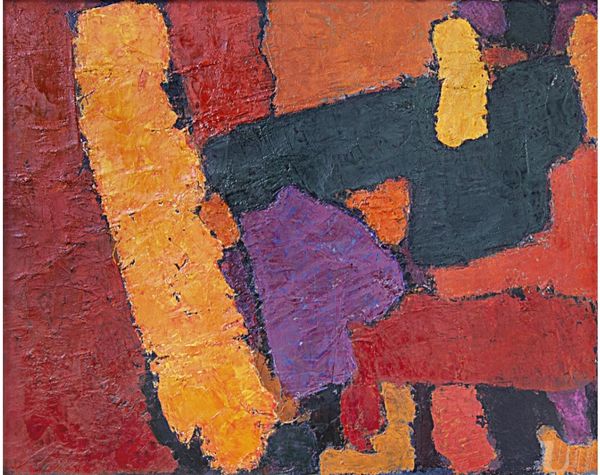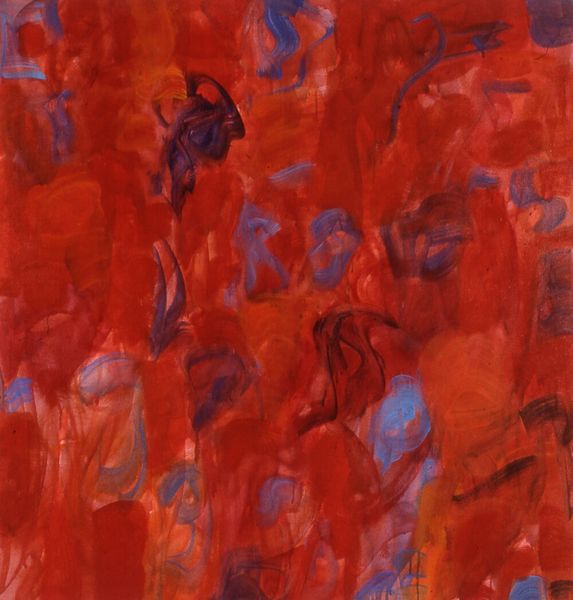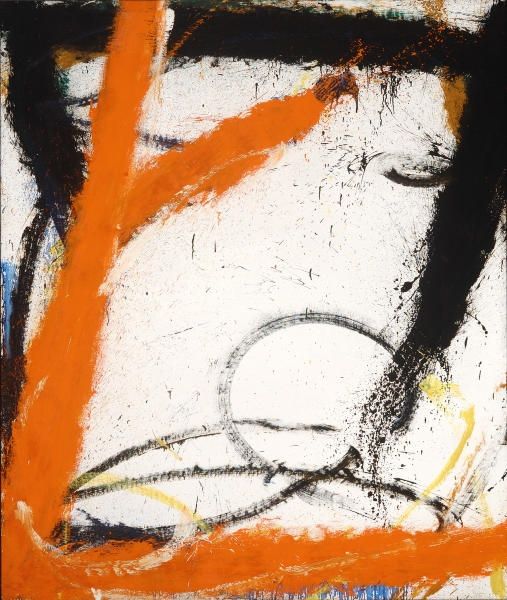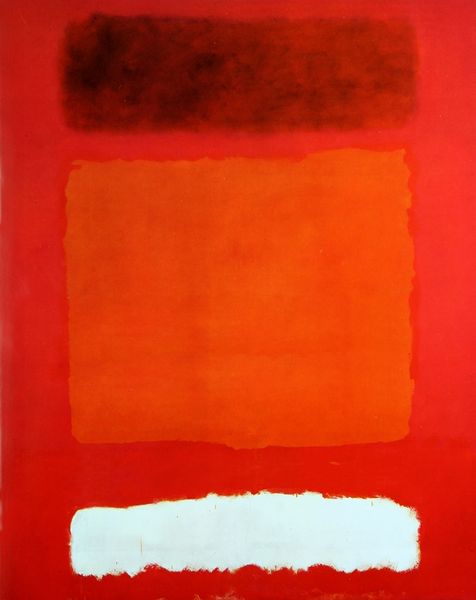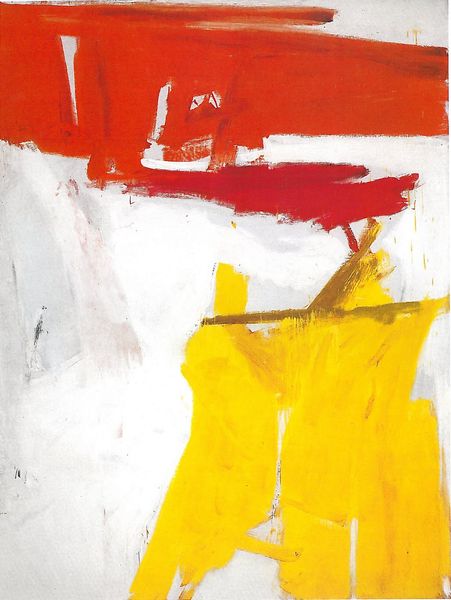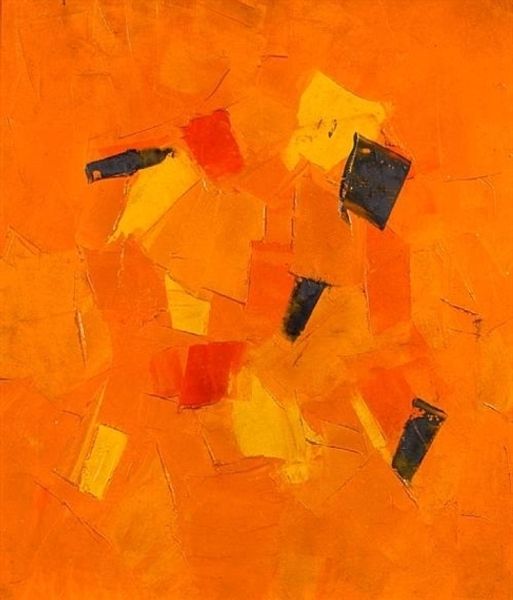
painting, oil-paint
#
acrylic
#
abstract painting
#
painting
#
oil-paint
#
painted
#
oil painting
#
geometric-abstraction
#
abstraction
#
modernism
Copyright: Serge Poliakoff,Fair Use
Editor: This is Serge Poliakoff's "Composition grise et rouge," painted in 1964, using oil paint. The interlocked blocks of color – the fiery red against the muted grays – create a really dynamic tension. What do you see in this piece, particularly concerning the forms and colors? Curator: The color choices create distinct emotional anchors. Red is, of course, vital, full of energy. Think of it in a symbolic context—a reference to blood, passion, even warning. But how do the surrounding grays temper or amplify that message? Do they mute the vitality, or provide a grounding contrast? Editor: That's interesting – I hadn’t considered the grounding effect. I was mainly focused on how the shapes interact. Curator: Consider also the geometric forms themselves. Do they evoke specific images or ideas from cultural memory? These shapes, while abstract, possess a primal quality. They hint at architecture, landscapes, or even heraldic symbols, triggering unconscious associations. What emotional memories are embedded in geometric forms? Editor: So, you are saying that even abstract shapes carry an almost historical weight? It’s less about what the artist intended, and more about what the shapes have come to represent? Curator: Precisely! It is the cultural resonance of forms that matters, the layered history of seeing and interpreting, all unconsciously informing our experience. Poliakoff, consciously or not, tapped into that. Editor: I never really thought about abstract art having symbolic weight but now I see how the interplay of color and form activates cultural memories. Curator: It’s a matter of learning to see beyond the surface and perceive the deeper symbolic currents at play.
Comments
No comments
Be the first to comment and join the conversation on the ultimate creative platform.

